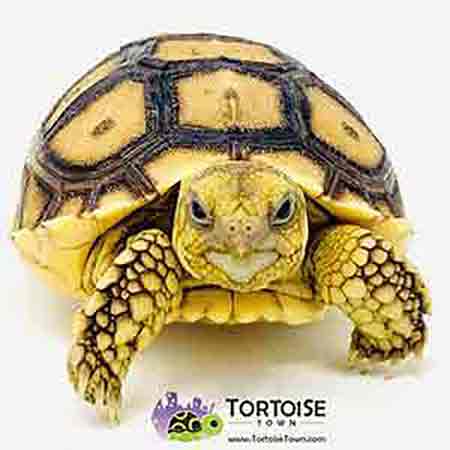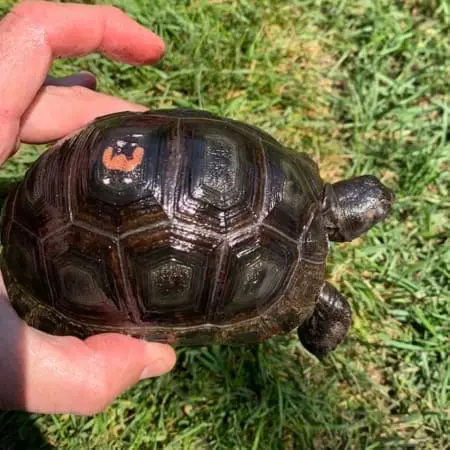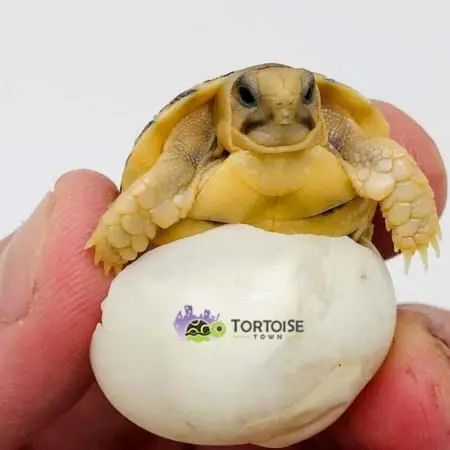Leopard Tortoise Species Profile, Size, Habitat & Baby Care
The leopard tortoise is a striking African species with a high-domed, spotted shell and gentle temperament. For keepers who want an eye-catching tortoise that grows larger than Mediterranean species but not quite as massive as a Sulcata, the leopard tortoise is a popular choice. Understanding their natural grassland habitat, adult size, diet and humidity needs is the key to long-term success.
Looking for the best tortoise breeders near me because they focus on captive-bred leopard tortoise babies raised on correct grazing diets with strong UVB exposure from day one.

Natural Grassland Habitat
Leopard tortoises come from dry, open grasslands and savannas across Eastern and Southern Africa. These environments feature hot days, cooler nights, tall grasses and scattered shrubs. The tortoises spend their days grazing, basking and seeking shade as needed.
In captivity, leopard tortoise enclosures should emphasize open floor space, warm basking zones, cooler retreats and plenty of grazing opportunities. Outdoor pens are ideal in warm climates, while indoor tortoise tables with UVB lighting and heat lamps work for juveniles and cooler seasons.
Adult Size & Growth
Leopard tortoises are medium-to-large tortoises that require serious long-term planning. While they do not reach the massive size of Sulcata tortoises, many individuals still grow impressively large.
- Adult shell length: Commonly 10–18 inches, sometimes larger.
- Growth rate: Steady, with faster growth in early years when diet and hydration are correct.
- Lifespan: 50+ years with proper care.
Before you buy leopard tortoise babies, map out how you will house a full-grown animal. Many keepers plan large outdoor grass pens, heated sheds or greenhouse-style habitats for long-term housing.
Leopard Tortoise Enclosure Setup
Indoor Housing
For hatchlings and juveniles, indoor tortoise tables are often the best option. Large wooden enclosures hold heat well and provide space for basic temperature gradients.
- Provide a footprint of 4 ft x 2 ft or larger for young animals.
- Create a basking area around 95–100°F.
- Maintain a cooler side in the mid-70s°F.
- Use a dry-biased, diggable substrate and multiple hides.
- Install strong UVB lighting over part of the enclosure.
Outdoor Housing
As leopard tortoises grow, outdoor pens become essential where climate allows. Secure walls, buried barriers and predator protection are critical.

Diet & Nutrition
Leopard tortoises are natural grazers. Their diet should be built around grasses, weeds and leafy plants rather than fruits or high-protein foods.
- Grasses & hay: Bermuda grass, orchard grass, timothy hay.
- Weeds: Dandelion, plantain, clover in moderation.
- Greens: Endive, escarole, turnip greens and mustard greens.
Supplements and UVB work together to support shell health. Offer plain calcium several times per week and provide reliable UVB or safe outdoor sun to prevent metabolic bone disease.
Humidity & Shell Health
Baby leopard tortoises benefit from higher humidity than adults. While they are grassland species, too-dry conditions for hatchlings can lead to pyramiding and shell problems.
- Use a warm, humid nursery enclosure for babies with daily soaks.
- Keep humidity elevated while still offering a hot basking area.
- Transition to drier setups as the tortoise grows and shell thickens.
Breeding & Hatchling Care
Breeding leopard tortoises requires stable husbandry, mature adults and plenty of space. Females lay clutches of eggs in warm nesting sites, often choosing slightly moist soil for digging. Careful incubation and patience are necessary for successful hatching.
Hatchlings are placed in warm nursery setups with hydration-focused routines and finely chopped greens plus safe weeds. Because the earliest months are delicate, many keepers prefer to purchase well-started babies.
Where to Buy Leopard Tortoises
Most people begin by searching online for a tortoise for sale and quickly realize the importance of choosing where to buy tortoise that is truly captive-bred and properly started.
When you are ready, explore the current selection of leopard tortoise for sale at Tortoise Town. Working with a reputable tortoise farm makes it easy to buy leopard tortoise babies that are already on the right path, so you can focus on fine-tuning your husbandry and enjoying your new pet.




